A Hands-on preview of Mortal Kombat 11 by King Hippo »
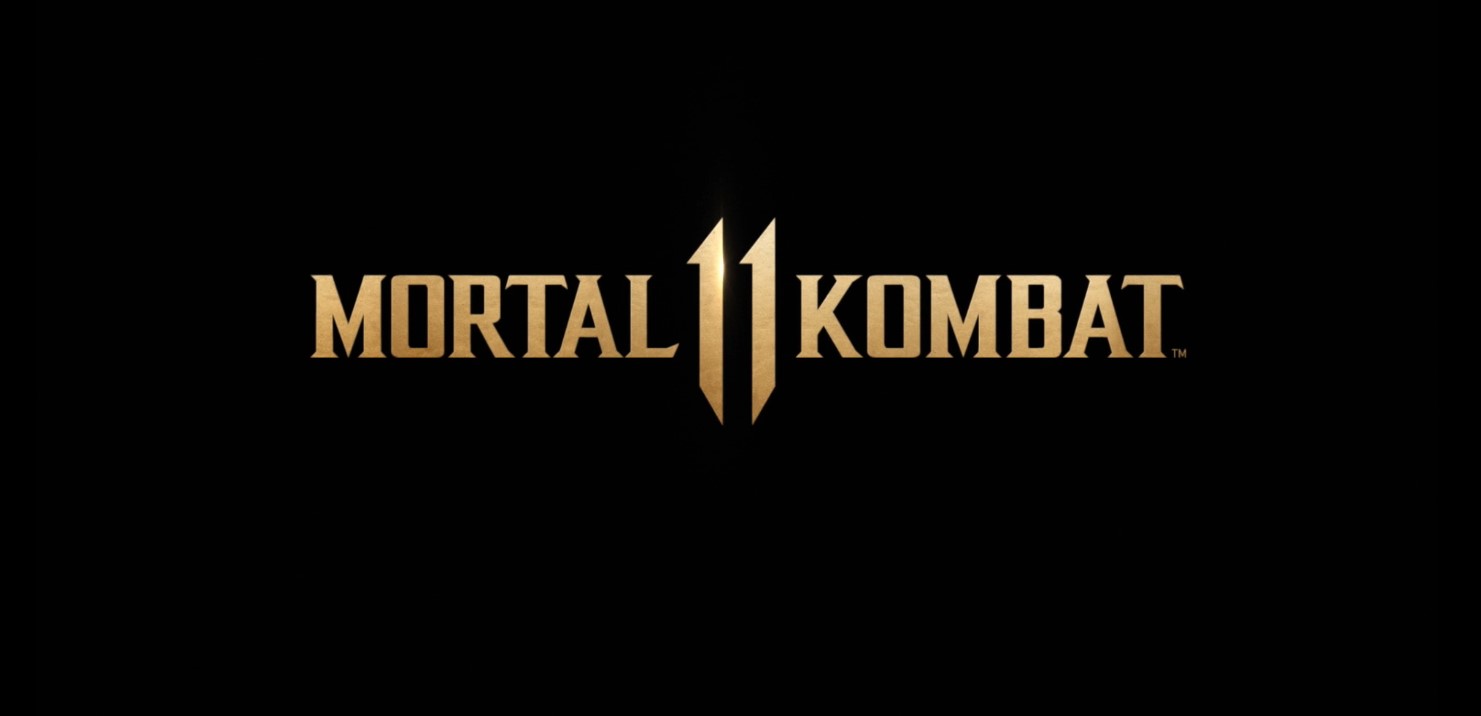 The Mortal Kombat 11 Reveal Event took place January 17 in Los Angeles, California, and showcased the upcoming title’s gameplay for the first time. I was lucky enough to not only grab some playtime in the single player area, but also in the press area for a decent time. As usual, Netherrealm Studios has really switched the formula around, and it was a lot to take in all at once, but overall, Mortal Kombat 11 is shaping up to be NRS’ most ambitious title yet, breaking some of the series’ long-held conventions in order to find new depth.
The Mortal Kombat 11 Reveal Event took place January 17 in Los Angeles, California, and showcased the upcoming title’s gameplay for the first time. I was lucky enough to not only grab some playtime in the single player area, but also in the press area for a decent time. As usual, Netherrealm Studios has really switched the formula around, and it was a lot to take in all at once, but overall, Mortal Kombat 11 is shaping up to be NRS’ most ambitious title yet, breaking some of the series’ long-held conventions in order to find new depth.
What’s New
Just a cursory glance at MK11’s UI will reveal its most drastic change: meter use is now divided across two bars, which refill over time with no additional actions needed by the player.
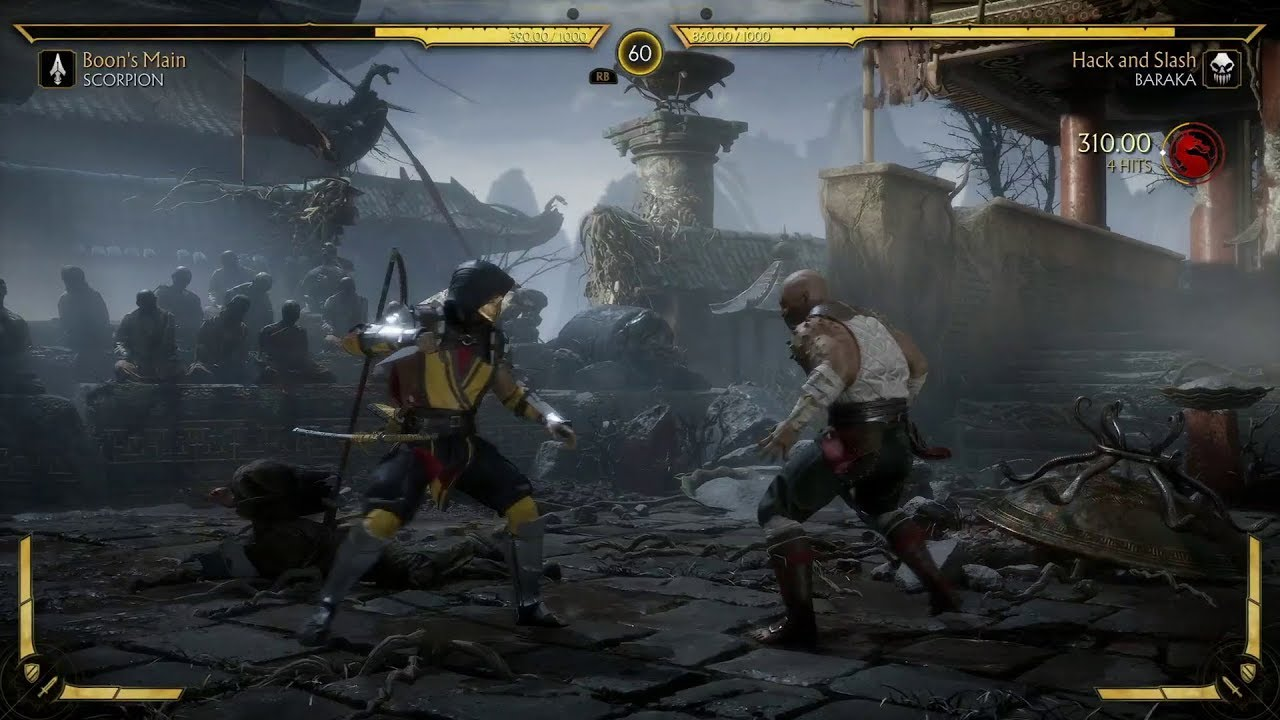 Previous games relied upon a more conventional three-to-four bar system, granting the player a super move (“X-Ray”) should the whole meter be filled. In this game, individual attack enhancements, now called “amplifications,” will be tied to the bottom attack bar, and moves of a more defensive nature such as wake-up attacks, an invincible tech roll, and interactable use will be tied to the upright defense bar. Those bars replenish over time at a set rate, with regeneration stopped immediately after use for a few seconds. Further, in a move not dissimilar to Tekken 7’s Rage Arts, a super move will be granted to the player should their health bar fall to 30%. The super move, Fatal Blow, is as hilariously gory as the previous games’ super moves, and can only be used once per match, disappearing permanently if it connects with the opponent; whiffing or having the move blocked will simply put it into a temporary cooldown.
Previous games relied upon a more conventional three-to-four bar system, granting the player a super move (“X-Ray”) should the whole meter be filled. In this game, individual attack enhancements, now called “amplifications,” will be tied to the bottom attack bar, and moves of a more defensive nature such as wake-up attacks, an invincible tech roll, and interactable use will be tied to the upright defense bar. Those bars replenish over time at a set rate, with regeneration stopped immediately after use for a few seconds. Further, in a move not dissimilar to Tekken 7’s Rage Arts, a super move will be granted to the player should their health bar fall to 30%. The super move, Fatal Blow, is as hilariously gory as the previous games’ super moves, and can only be used once per match, disappearing permanently if it connects with the opponent; whiffing or having the move blocked will simply put it into a temporary cooldown.
Krushing Blow is another mechanic that has been added as a bit of a replacement for the bone-crunching X-Rays in previous MK games. By fulfilling a preset condition, players can initiate a Krushing Blow, which does eye-popping damage in addition to carrying special properties like an extra juggle or allowing a special-cancel. Fans of Soul Calibur VI will find it very much like the Lethal Hit system in that game, although like the Fatal Blow, Krushing Blows can only be used once a game. The conditions to inflict a Krushing Blow varied per character: some activated in punish scenarios, others did after ending with a certain string at the end of a combo. It seemed, however, that there were a few universal conditions, such as breaking a throw with the wrong button or landing your generic uppercut (Down + Back Punch) as a counter-hit. Learning the conditions and setting yourself up to capitalize from them will be key to dictating the flow of a match in MK11.
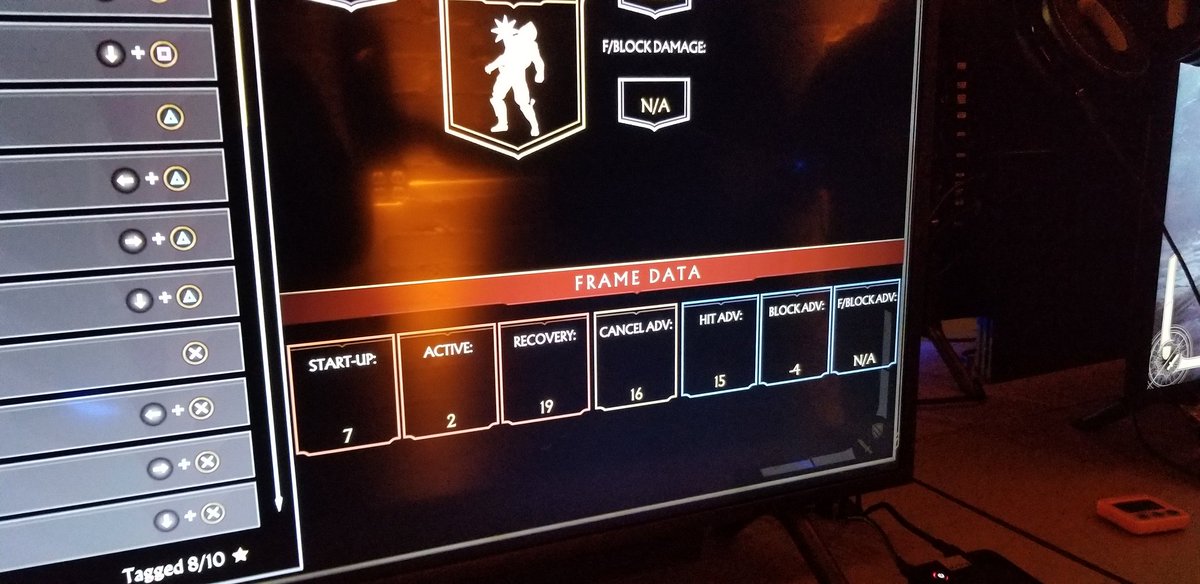 There’s one other additional new mechanic that I didn’t get the official name for, but most have been calling it a short hop, because that’s literally what it is: a neutral jump that goes to about head level and will hop over lows and throws. The motion to do it will be familiar to anyone who has played Super Smash Bros. or King of Fighters: you tap up and the character will hop straight up. From the hop, you can use either Back Punch or Front Kick to deliver an overhead that gives an extended knockdown on hit. This, in essence, functions as a universal overhead for all characters, and as an answer to pesky long-range low kicks that characters like Scorpion and Sub-Zero have.
There’s one other additional new mechanic that I didn’t get the official name for, but most have been calling it a short hop, because that’s literally what it is: a neutral jump that goes to about head level and will hop over lows and throws. The motion to do it will be familiar to anyone who has played Super Smash Bros. or King of Fighters: you tap up and the character will hop straight up. From the hop, you can use either Back Punch or Front Kick to deliver an overhead that gives an extended knockdown on hit. This, in essence, functions as a universal overhead for all characters, and as an answer to pesky long-range low kicks that characters like Scorpion and Sub-Zero have.
Lastly, it would be remiss of me not to mention two critical mechanics that are no longer available: the combo breaker and running. In both MK9 and MKX, players could spend two bars and break out of any combo during hitstun, which knocked the attacker back and kind of reset space for at least a minute. This has been replaced by an equally costly move that has you plummet to the ground during a juggle, enacting an armored state that lets you slip out of most juggle opportunities. Unlike breaker, this does not work on the ground, and you will take any additional damage that comes from armoring through an attack. MKX players will also find themselves without the use of the powerful run, which has been dropped; there’s now just forward and back dashes. These two changes have probably done the most to shift MK11’s identity far away from both MK9 and MKX.
What’s Familiar
None of this is to say that some familiar NRS game staples aren’t still in play. Like all the previous games the studio has made, attack strings are performed by “dialing” the string in before it hits, and they come out regardless of a hit or whiff. Jump attacks are also familiar, with each character having four different attacks and being able to extend pressure or confirm a combo from them by inputting the attack string before you land. The block button is here too, although there is now a just-defend-like addition called Flawless Block, which lets you cancel into the wakeup attacks from block if you should block within the first three frames of an attack.
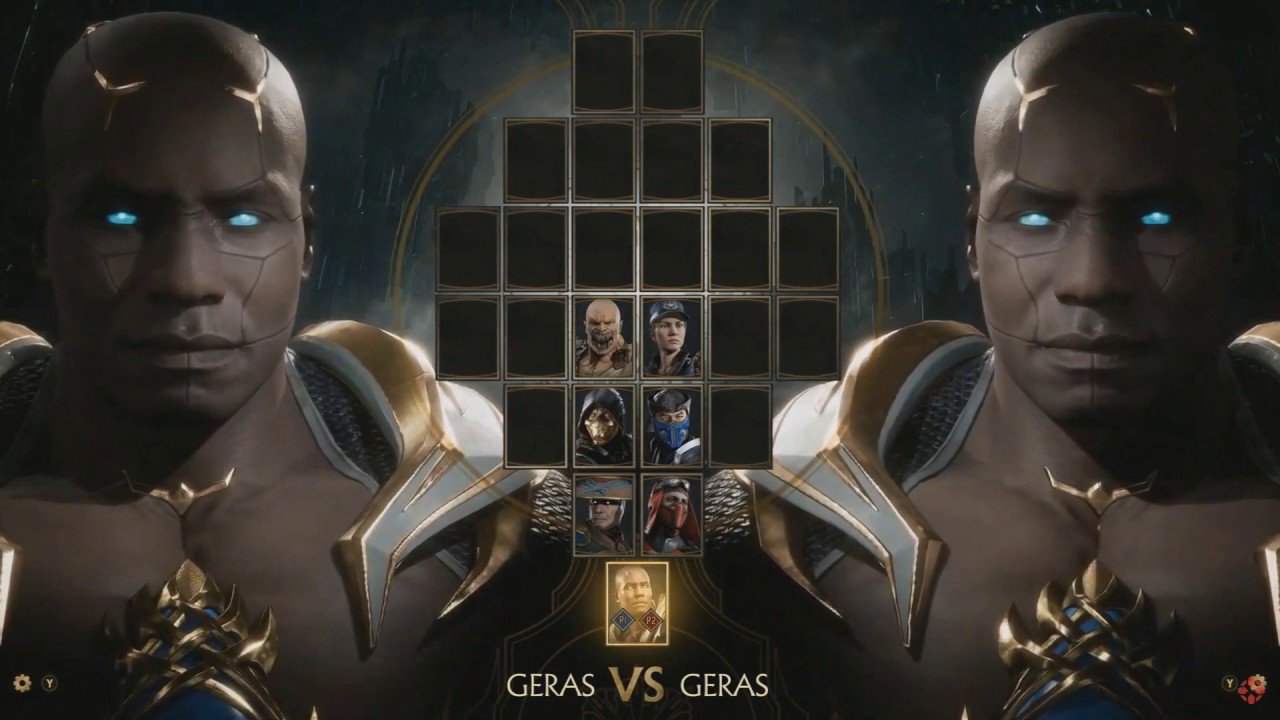 Similarly, the current cast of selectable characters is comfort food for any MK fan. Old favorites like Scorpion, Sub-Zero, Raiden and Sonya are back, but joining them are returning series icon Baraka and Skarlett, a character last seen in MK9 who has returned with a massive glow-up. Rounding out the cast is a new addition: Geras, a giant, time-controlling servant of the mysterious Kronika. MK11 is using the same facial recognition technology that powered Injustice 2, and it shows in the character select screen. While the majority of the characters are returning, the strength of the graphics and the customization allowed puts a whole new spin on otherwise old designs.
Similarly, the current cast of selectable characters is comfort food for any MK fan. Old favorites like Scorpion, Sub-Zero, Raiden and Sonya are back, but joining them are returning series icon Baraka and Skarlett, a character last seen in MK9 who has returned with a massive glow-up. Rounding out the cast is a new addition: Geras, a giant, time-controlling servant of the mysterious Kronika. MK11 is using the same facial recognition technology that powered Injustice 2, and it shows in the character select screen. While the majority of the characters are returning, the strength of the graphics and the customization allowed puts a whole new spin on otherwise old designs.
Yes, variations are back too, although with a slight twist. Mortal Kombat X had locked-in variations, but MK11 will have them fully customizable, from the outfit and colors a character wears down to what moves they have, and even the intros and outros. You’ll get to name them as well, so it’s somewhat akin to Injustice 2’s gear loadouts, although they’ll have more specificity this time. It wasn’t clear exactly what NRS is going to do for a more competitive environment, but the current consensus seems to be that there will be pre-set variations available for a tournament settings, much like MKX.
How Does It All Come Together?
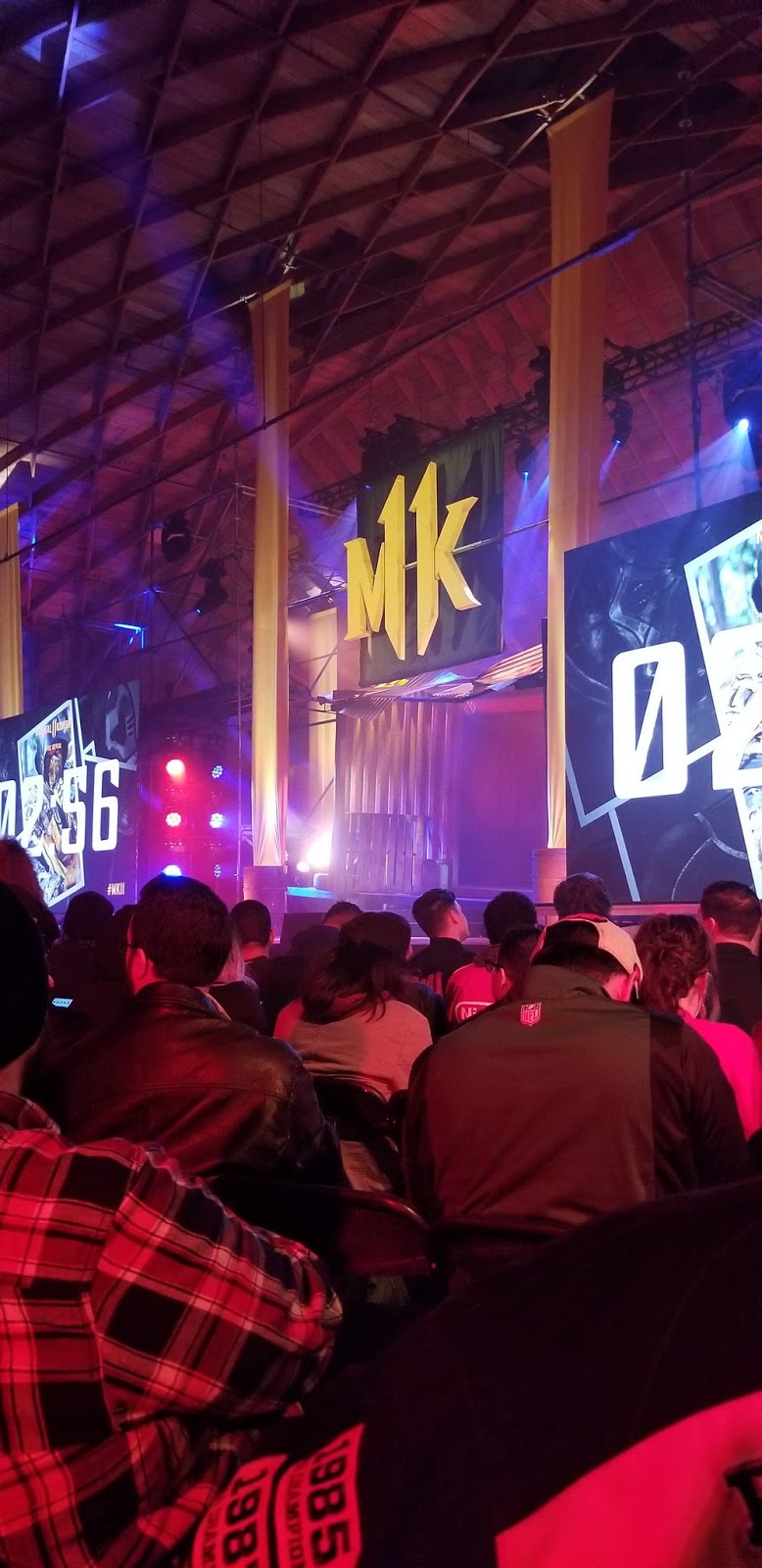 When I first sat down with the game, it took me a little while to get acclimated to the movement. Some have compared the game’s movement style to MK9, but I think the more apt comparison may go even further back, to MK2. Dashes are effective as a space-closer, but they don’t inform every aspect of movement like they did in the more recent titles because of their recovery and late cancel timing. You will be walking a lot, with some thankfully serviceable walk speeds and hearty, big attack strings. One other game that came to mind was Samurai Shodown, as many characters have very long attacks involving weapons or special moves that allow them to engage in the midrange at all times in the attempt to get close. There’s even a hop! If one could combine the slower pace and simplicity of MK2 with some of the mixup options and normal range of Samurai Shodown V, we may have some idea of MK11's future gameplay.
When I first sat down with the game, it took me a little while to get acclimated to the movement. Some have compared the game’s movement style to MK9, but I think the more apt comparison may go even further back, to MK2. Dashes are effective as a space-closer, but they don’t inform every aspect of movement like they did in the more recent titles because of their recovery and late cancel timing. You will be walking a lot, with some thankfully serviceable walk speeds and hearty, big attack strings. One other game that came to mind was Samurai Shodown, as many characters have very long attacks involving weapons or special moves that allow them to engage in the midrange at all times in the attempt to get close. There’s even a hop! If one could combine the slower pace and simplicity of MK2 with some of the mixup options and normal range of Samurai Shodown V, we may have some idea of MK11's future gameplay.
To keep the SSV comparison going, combos seem to be kept to a minimum here, unless you use the two Blow mechanics. Most characters (Sub-Zero and Skarlett were exceptions) could not launch you without at least spending one attack bar, and the damage would only reach 35% or so if you used two bars. The one-time use of a Krushing Blow or Fatal Blow could really run up the damage, but this will play into the strategy of the game. Do you use your Fatal Blow in round 1 as a combo ender and surrender it as a potential comeback later? Do you use a Krushing Blow from your special move as a surprise 25% damage bonus or at the end of a combo to really inflict some damage? Losing those options after one use is going to make the decision-making very interesting for players.
Ultimately, it’s the increased player interaction that has me most excited. I have been critical of past NRS games for having such strong, safe armor and really safe mixup options that it sometimes takes the interaction between players out of it, but MK11 seems to have really cleaned this up. Armor on specials is largely removed as a universal trait, and hit-scan style projectiles now have to be aimed to be used effectively. In addition, really strong attacks and strings seem to have a Flawless Block counter to them, meaning players who master the game will have more options to introduce counterplay to the opponents' attacks. I have seen many say that the 50/50 guessing scenarios are “gone,” but I think this is a misnomer; every character had a pretty strong guessing game they could inflict up close, but closing the gap to enact those guessing situations is more difficult, and they inflict less damage without Fatal or Krushing Blow. Many overheads are one-hit knockdowns, and just as many attack strings with low/overhead variants are unsafe if blocked, so there will be higher risk to get those high rewards.
Overall, I’m very excited for what is to come. MK11 is building from the groundwork laid by all the previous titles, even those in the Injustice series, and changing things up in order to address some long-standing issues that have plagued the game at a high level while also streamlining and refining some old mechanics into something bold and new. A demo meant to test the game’s netcode will be available for those with a digital preorder on March 28, and the final game releases on April 23 simultaneously for the PS4, Xbox One, PC, and Nintendo Switch.
King Hippo is a FGC vet out of Phoenix, AZ that likes NRS games and likes to write about social issues in the FGC even more. Follow him on Twitter @KingHippo42 if you like his work and want to see more!

 SuperFX
SuperFX
Reader Comments